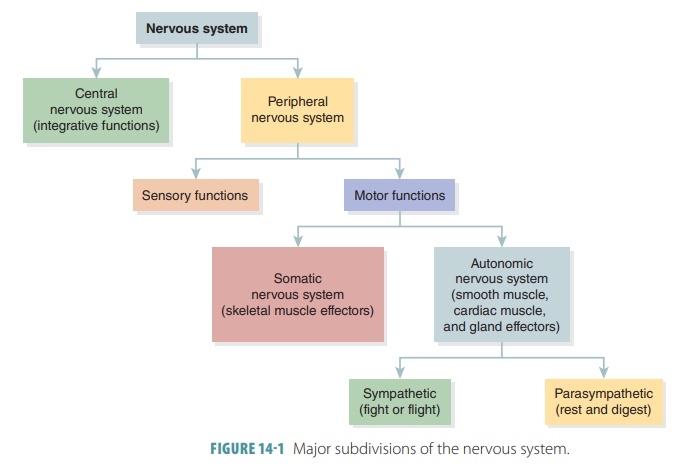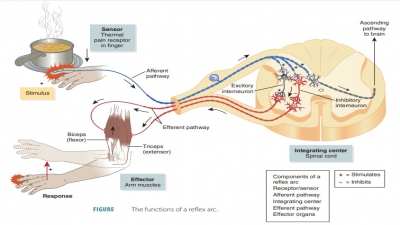Autonomic Nervous System (ANS)
| Home | | Anatomy and Physiology | | Anatomy and Physiology Health Education (APHE) |Chapter: Anatomy and Physiology for Health Professionals: Autonomic Nervous System (ANS)
The autonomic nervous system (ANS) is part of the peripheral nervous system (PNS).

Autonomic
Nervous System
After
studying this chapter, readers should be able to:
1. Distinguish
between the sympathetic and parasympathetic divisions of the autonomic nervous
system.
2. Describe
the relationship between preganglionic and postganglionic neurons.
3. Identify
the two nerves that make up most of the preganglionic parasympathetic fibers in
the body.
4. Explain
dual innervation of the autonomic nervous system.
5. Differentiate
between cholinergic and adrenergic neurons as to the neurotransmitter secreted
and the type of neuron that secretes the neurotransmitter.
6. Describe
the arrangement of sympathetic and parasympathetic neurons and ganglia.
7. Differentiate
between nicotinic and muscarinic receptors.
8. Contrast
the two types of cholinergic receptors.
9. Give
examples of adrenergic and cholinergic effects upon various organs.
10. Summarize
imbalances of the autonomic nervous system.
Overview
The autonomic
nervous system (ANS) is part of the peripheral
nervous system (PNS) (FIGURE 14-1). It mostly functions autonomously (independently), with-out conscious
effort. It is also sometimes referred to as the involuntary
nervous system or general
visceral motor
system. The ANS regulates
the smooth muscles, cardiac muscles, and glands. It can respond to emotional stress and prepares the body for strenuous physical activity. Most
peripheral nerve fibers lead to ganglia located outside the central nervous
system (CNS) and control visceral muscles and glands highly independent of the
brain and spinal cord. Important differences between the autonomic and somatic
nervous systems include their effectors, efferent pathways and ganglia, and
target organ responses to neurotransmitters.

Related Topics


